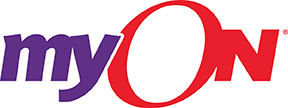Digital natives in schools across the country are discovering the joys of curling up with a good ebook—and they’re reaping all the old-fashioned benefits of independent reading. As various digital ELA curricula transform the culture of reading in these schools, educators report not only improved reading skills and test scores but also increased engagement, comprehension, ownership, and critical thinking that spill over into student work in other subjects. Access to these digital tools and libraries is opening doors to the world and to the future.
A GROWING DISTRICT GROWING READERS
FIRM FOUNDATIONS
 A few short months ago, in August 2016, Manor ISD outside Austin, Texas, adopted digital libraries—and they’ve already seen a significant number of students move from “critical” to approaching grade-level standards in reading. How do they know? “You have to have built-in progress monitoring for any tech initiative,” says new Superintendent Dr. Royce Avery, and tracking utilization rates and growth is critical. Weekly reports are showing improvement across the board. “There’s more work to be done,” Avery says, “but the gains are there.”
A few short months ago, in August 2016, Manor ISD outside Austin, Texas, adopted digital libraries—and they’ve already seen a significant number of students move from “critical” to approaching grade-level standards in reading. How do they know? “You have to have built-in progress monitoring for any tech initiative,” says new Superintendent Dr. Royce Avery, and tracking utilization rates and growth is critical. Weekly reports are showing improvement across the board. “There’s more work to be done,” Avery says, “but the gains are there.”
Like many districts, Manor ISD faces challenges—a diverse student body across a hundred-mile radius, a high percentage of economically challenged families, increasing numbers of ELLs. But Avery is unwaveringly optimistic when explaining what is perhaps their biggest challenge. In the past five years, the student population has grown from 2,000 to nearly 9,000. And as families continue to seek affordable housing outside Austin, Manor is preparing to serve double that number—18,000 students—in the next four to five years.
The district is in the midst of building new schools, sourcing “the latest and greatest” in fiber optics, opening three new Pre-K centers for full-day programs to ensure crucial early intervention, and enhancing existing campuses with furniture and other resources to create attractive, collaborative, and innovative learning environments. But as ground is broken and foundations are poured, the focus remains on the most groundbreaking work of all—equipping students with foundational skills for success. And literacy is the cornerstone.
SKILL-BUILDING TOOLS
 MacBooks and iPads abound on the 13 campuses of this “Apple-enthusiastic district,” and Manor high schools are 1:1. Classrooms are equipped with Extron systems and Epson projectors; tools such as Doceri and IPEVO bring interactive elements to the classroom, and teachers are using programs including MyOn, MindPlay Virtual Reading Coach (MVRC), and Think Through Math to evaluate and remediate skills.
MacBooks and iPads abound on the 13 campuses of this “Apple-enthusiastic district,” and Manor high schools are 1:1. Classrooms are equipped with Extron systems and Epson projectors; tools such as Doceri and IPEVO bring interactive elements to the classroom, and teachers are using programs including MyOn, MindPlay Virtual Reading Coach (MVRC), and Think Through Math to evaluate and remediate skills.
MyOn and MVRC, Avery explains, “are focused on developing literacy skills based in different approaches.” MyOn provides ebooks that “pique student interest in a particular topic or area.” These high-interest texts (there is also a Spanish version) help to foster the habits and culture of reading “all the time.” MVRC, on the other hand, after an initial diagnostic check, “prescribes a developmental literacy pathway through a virtual coaching model” to fill any voids. Tools like Wixie reinforce literacy as students participate in digital storytelling.
Manor also enlists its community partners, such as technology companies Applied Materials and Samsung, who provide a range of support, from financial contributions to mentors and reading partners, in efforts to encourage students to see that reading is fun. Competitions with rewards such as visits to the workplace and books provide incentives that are also rich learning opportunities.
SHIFTING PRIORITIES
One key to success with targeted reading programs like MVRC, Avery says, “is to ensure students get access to the program for the right amount of time.” And this “requires shifting priorities on campuses.” Students at Manor “in critical need of reading support get 30 minutes of time, four days a week and have shown strong gains.” Because the chances for academic success drop significantly for students who are behind in reading, Avery says, “it is imperative that we intervene—and that might require changing schedules of classes and students or shifting technology resources around.”
All of this, Avery emphasizes, requires “having lots of conversations with teachers about the benefits and offering as much support as possible.” Four instructional technology specialists at Manor work with educators on successfully integrating technology in their classrooms.
Erik Hauck, for example, integrates technology daily through blended learning in his second-grade classroom at Pioneer Crossing Elementary. “Students use iPads and various apps to complete projects that involve lots of reading,” Avery says, in addition to time using MVRC. His efforts have resulted in all his students moving from ‘critical’ to approaching grade-level standards over the course of one semester.
TOOLS THEY USE
MANOR ISD
► MyOn
To view the full article click here.


